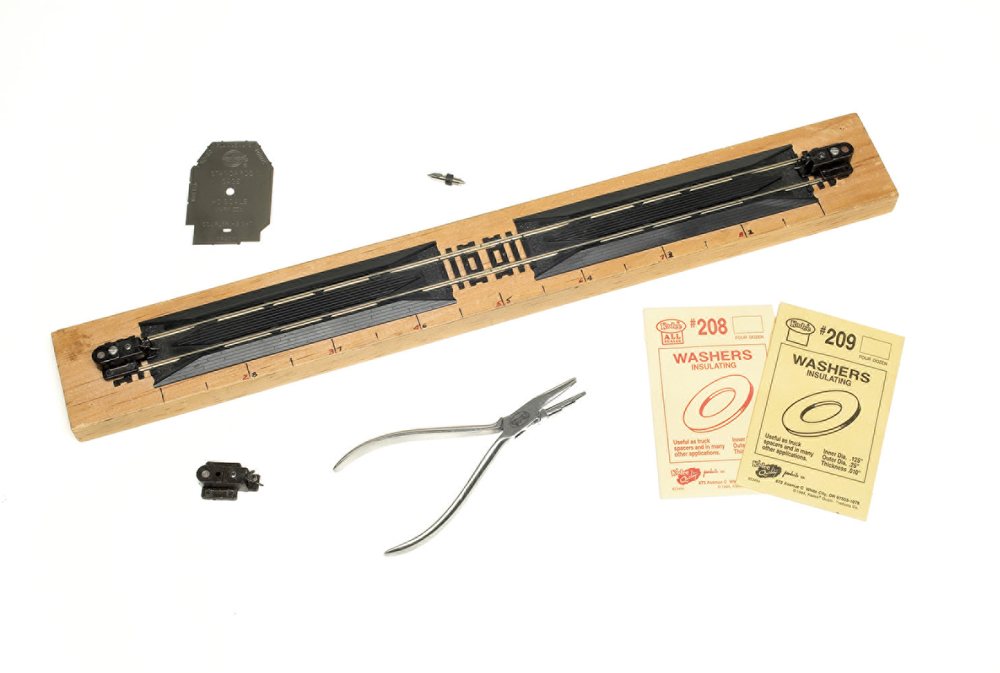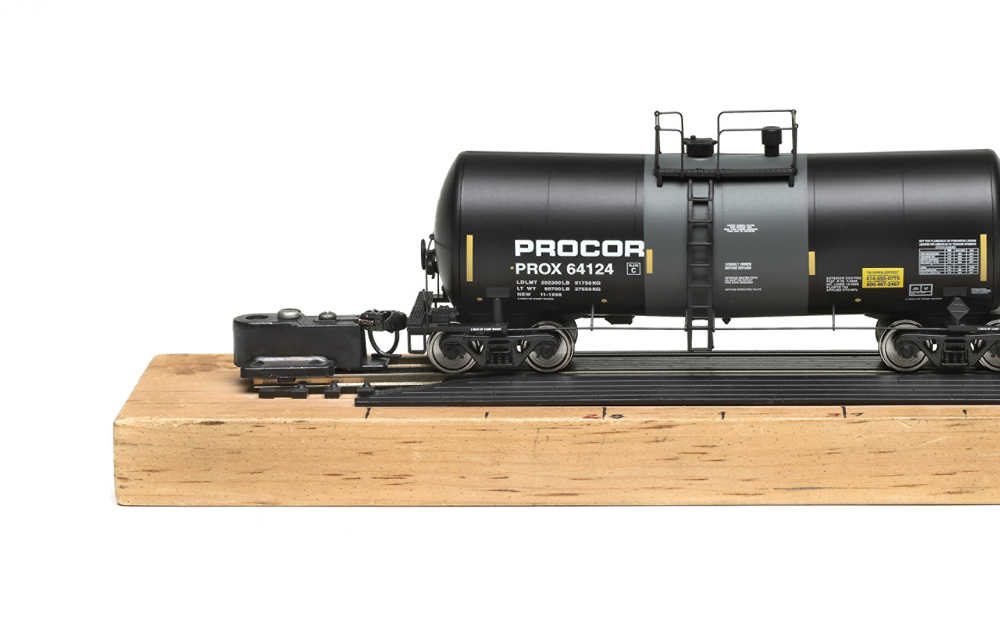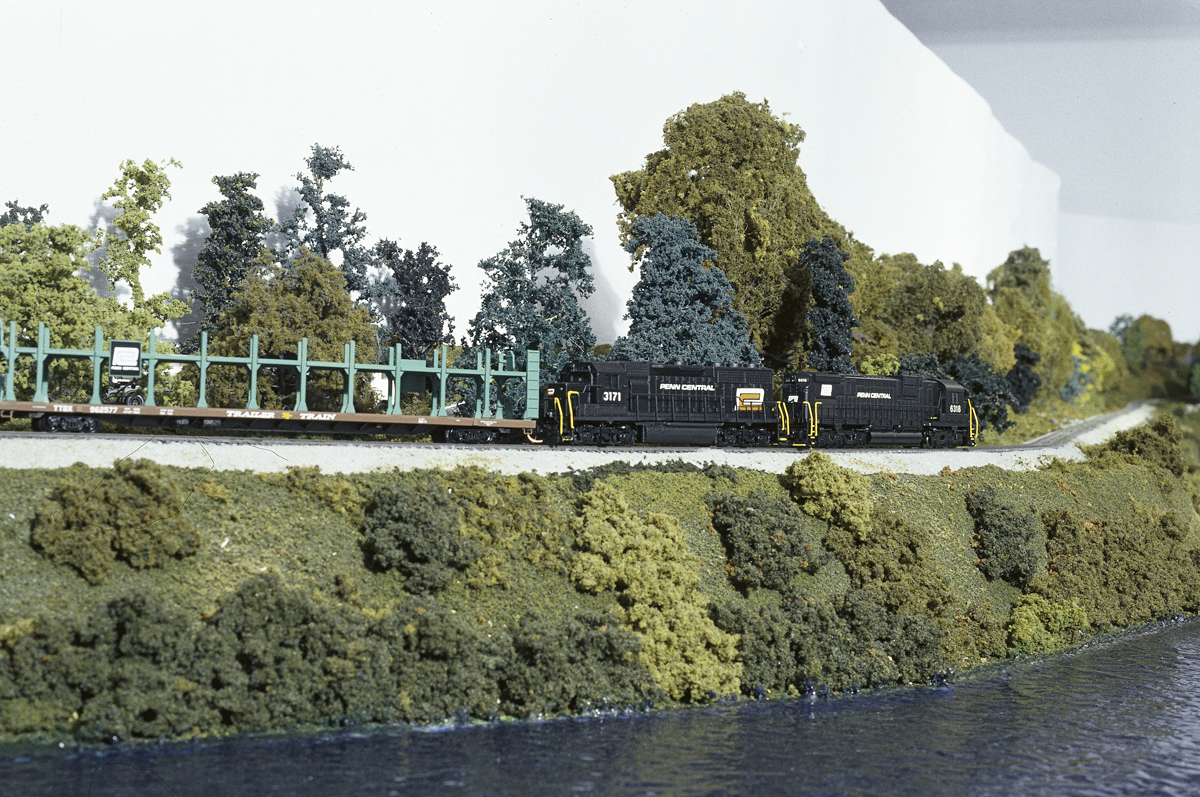Good rolling stock plays a major role in the operating quality of any layout. On most model railroads, the car fleet represents more potential problems than any other single element, so here’s how I check every car before it goes on my Ohio Southern Railroad, using just a few handy tools, 1.
Trucks and wheels
The majority of current HO cars come with RP-25 contour wheels, so I use an NMRA Standards Gauge to check every wheelset to make sure the wheels are in gauge and properly centered on the axle. After checking the gauge, I spin each axle and discard any with wheels that wobble or don’t run true.
If a wheel adjustment is required, I grip the metal axle with a pair of needlenose pliers and use my fingers to twist the plastic wheels until they match the notches in the NMRA gauge.
I check new trucks for molding flash that may impede the car’s free rolling qualities. Needle-point axles provide the best rolling qualities, but occasionally, I find a tight rigid-frame truck that squeezes the ends of the axles and effectively puts the brakes on. To resolve this problem, I use a double-ended journal reaming tool called the HO Truck Tuner (Micro-Mark no. 82838).
Coupler test fixture
To speed up my freight car coupler inspections, I made a simple text fixture, 2. I used a smooth piece of 1 x 3 as a base with a couple of Atlas no. 844 code 100 rerailers tacked along its center line. I mounted a Kadee coupler gauge at each end.
To use the fixture, I set a car in the middle and move it back and forth so the rerailers put the car on the track. Then I push the car from end to end to check coupler heights and uncoupling pin positions at both ends. If an adjustment is needed, Kadee and Micro-Mark sell special pliers for this job.
I use Kadee no. 208 (.015″) and no. 209 (.010″) fiber washers to make minor height adjustments until the car matches the height gauges. However, if more than a washer or two is required, I set the car aside for further work on the coupler boxes to avoid raising the model above its proper scale height.
Appropriate weight
My HO inspection fixture is marked in 1″ increments, and then I calculated and added the appropriate NMRA RP-20.1 weight alongside the length marks. The recommended weight for an HO car is 1 ounce initial weight plus 1/2 ounce per inch of the car length.) When a car is coupled to a gauge, I can easily read what it should weigh when I put it on the scale.
I use a postal scale to weigh each car. If any adjustments are needed, I add stick-on weights or use double-faced pieces of foam mounting tape to add steel washers inside the car.
My last step is to adjust the truck kingpins – I tighten both trucks down until they’re snug. Then I loosen one by half a turn, and the other by a full turn. This produces a steady-riding carbody, while the looser truck can still rock from side to side to pass over any small undulations in the track.
Maintaining the fleet
After my initial fleet inspections, I find that my cars seldom need much attention. As I completed my car adjustments, the Ohio Southern’s quality of operation steadily improved. Today, most of my derailments are caused by human error, so any car that derails on its own is immediately set aside for a full inspection before it returns to regular service.

1. Useful tools for tuning up rolling stock include a coupler test fixture, truck tuner, NMRA Standards Gauge, height gauge, and a trip pin pliers.

2. This test fixture makes it easy to quickly check coupler height and make sure they align. It also helps check the position of uncoupling pins on freight cars.














How about using a PVC 1×3 instead of using wood? With PVC you don’t have to worry about the wood warping or cracking or splintering. Just a suggestion.